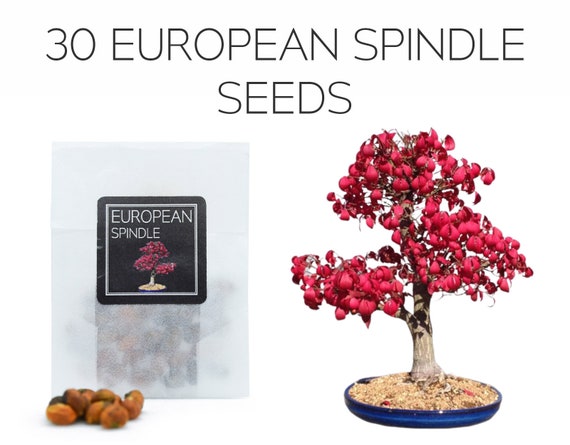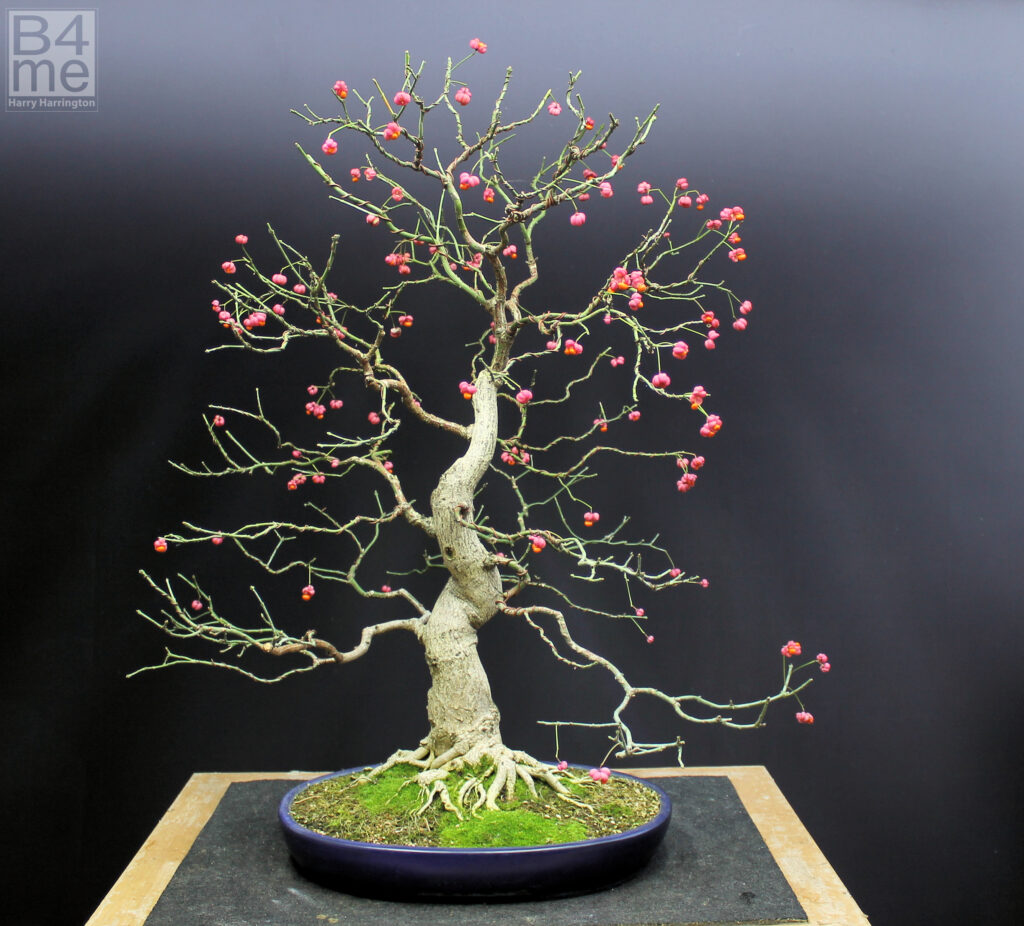Spindle Bonsai trees need proper sunlight, watering, and pruning. They thrive in well-drained soil and moderate humidity.
Spindle Bonsai trees, with their unique appearance and manageable size, are perfect for bonsai enthusiasts. These trees require specific care to maintain their health and aesthetic appeal. Providing the right amount of sunlight is crucial; place them where they can get morning sun and afternoon shade.
Watering should be regular but not excessive, ensuring the soil remains moist but never waterlogged. Pruning is essential for shaping and promoting new growth. Use well-draining soil to prevent root rot and maintain moderate humidity levels. With proper care, Spindle Bonsai trees can thrive and add beauty to any space.
Introduction To Spindle Bonsai
The Spindle Bonsai tree is native to Europe and Asia. It has a rich history and was used in traditional medicine. These trees can grow in various climates and are very hardy. They are popular among bonsai enthusiasts for their beautiful foliage and bright berries.
Spindle Bonsai trees have small, oval leaves. Their leaves change color with the seasons, adding beauty to any garden. The tree produces bright, orange berries in the fall. Its bark is smooth and gray, making it visually appealing. It can be shaped and pruned easily, making it a favorite for bonsai artists.
Choosing The Right Spindle Bonsai
Selecting the perfect Spindle Bonsai involves considering its light, water, and soil needs. Ensure the tree receives sufficient sunlight and maintains proper moisture levels. Regular pruning and fertilization will keep your Spindle Bonsai healthy and thriving.
Selecting Healthy Specimens
Healthy spindle bonsai trees have green leaves. Look for strong branches. Avoid plants with yellow leaves. Check for pests on the leaves. Healthy roots are white and firm. Avoid trees with mushy roots.
Ideal Varieties
Some spindle bonsai varieties are better. Dwarf varieties are popular. Euonymus Japonicus is a good choice. Another choice is Euonymus Alatus. Choose a variety that suits your climate. Dwarf varieties are easier to manage.
Optimal Soil And Potting
Spindle Bonsai thrives in well-draining soil with a balanced mix of organic matter and grit. Regularly refresh the potting medium to ensure optimal growth and health.
Soil Composition
The right soil is key for a healthy Spindle Bonsai tree. Use a mix of 50% akadama, 25% pumice, and 25% lava rock. This blend helps keep roots healthy. The soil must drain well to avoid root rot. Organic matter like peat can be added, but in small amounts. The soil must be slightly acidic. A pH between 5.5 and 6.5 is ideal.
Pot Selection
Choosing the right pot is also very important. The pot should have drainage holes to let water out. This prevents water from staying in the soil too long. The pot size should fit the tree’s root system. A shallow pot is usually best. Make sure the pot is not too big. This helps the tree stay small and healthy. Ceramic pots are preferred for their durability.

Credit: www.etsy.com
Watering Techniques
Proper watering techniques are crucial for Spindle Bonsai Tree care. Ensure the soil remains moist but not waterlogged. Regularly check moisture levels to prevent root rot.
Watering Frequency
Spindle bonsai trees need water regularly. Check the soil daily to see if it is dry. Water the tree when the topsoil feels dry. Be sure not to let the soil stay dry for too long. Moist soil is important for the tree’s health.
Signs Of Overwatering
Overwatering can harm your spindle bonsai tree. Yellow leaves are a sign of too much water. The soil might smell bad if overwatered. Mold can grow on the soil surface. Roots may become soft and mushy. Watch for these signs to keep your bonsai healthy.
Pruning And Shaping
Use sharp and clean pruning shears for cutting branches. Concave cutters help to remove branches smoothly. Wire cutters are needed to remove wiring without damaging the tree. A root rake helps to untangle roots during repotting. Always sterilize tools to prevent disease.
Wiring is a common method to shape a bonsai tree. Aluminum wire is easy to handle for beginners. Copper wire is stronger and better for experienced growers. Wrap the wire around the branch in a spiral. Bend the branch gently into the desired shape. Pruning also helps to shape the tree. Cut unwanted branches and leaves. Pinching new growth encourages more branching.
Fertilization Practices
Use balanced fertilizers for the spindle bonsai tree. Look for a fertilizer with equal parts of nitrogen, phosphorus, and potassium. Organic fertilizers work well too. Fish emulsion and seaweed extract are great organic choices. They provide a slow release of nutrients. Avoid high-nitrogen fertilizers. They can cause excessive leaf growth.
Fertilize the spindle bonsai tree every two weeks during the growing season. This is usually spring and summer. In fall and winter, reduce the frequency. Apply fertilizer once a month. Always follow the instructions on the fertilizer package. Over-fertilizing can harm the tree. It is better to under-fertilize than to over-fertilize.
Pest And Disease Management
Spindle bonsai trees often attract aphids, spider mites, and scale insects. Aphids are tiny and green, feeding on new leaves. Spider mites are red and live on the underside of leaves. Scale insects appear as small brown or white bumps on stems.
Keep your bonsai tree clean and dust-free. This helps reduce pests. Inspect your tree regularly for any signs of infestation. Isolate new plants before placing them near your bonsai. Use neem oil or insecticidal soap as a preventive spray. Proper watering and fertilization strengthen the tree’s health.

Credit: bonsai4me.com
Seasonal Care Tips
Spindle bonsai trees need special care in winter. Keep the tree in a cold room, but not freezing. Protect the tree from frost. Use mulch to cover the soil. It helps to keep the roots warm. Water the tree less often. Too much water can harm the roots. Check the tree for pests. Pests can hide in the cold season. Use insecticidal soap if needed.
Summer is a growing time for spindle bonsai trees. Water the tree more often. The soil should not dry out. Place the tree in a spot with morning sun. Afternoon shade is also good. Prune the tree to keep its shape. Use sharp, clean tools for pruning. Fertilize the tree every two weeks. Use a balanced fertilizer for best results. Watch for pests and treat them quickly.
Advanced Techniques
Grafting helps create unique branches. It’s useful for repairing damage on the tree. Choose healthy branches for best results. Use sharp tools to make clean cuts. Join the cut pieces securely. Wrap the graft with grafting tape to protect it. Monitor the graft regularly to ensure it heals well.
Creating deadwood gives the bonsai an aged look. Use a sharp knife to carve the wood. Remove bark carefully to expose the wood. Apply lime sulfur to preserve the deadwood. This also gives it a white color. Check the wood regularly for any rot.

Credit: bonsaitoday.com
Conclusion
Caring for a Spindle Bonsai tree requires attention and patience. Regular pruning, proper watering, and adequate sunlight are essential. Following these tips ensures a healthy, beautiful bonsai. Enjoy the rewarding experience of nurturing your Spindle Bonsai. Happy gardening!

